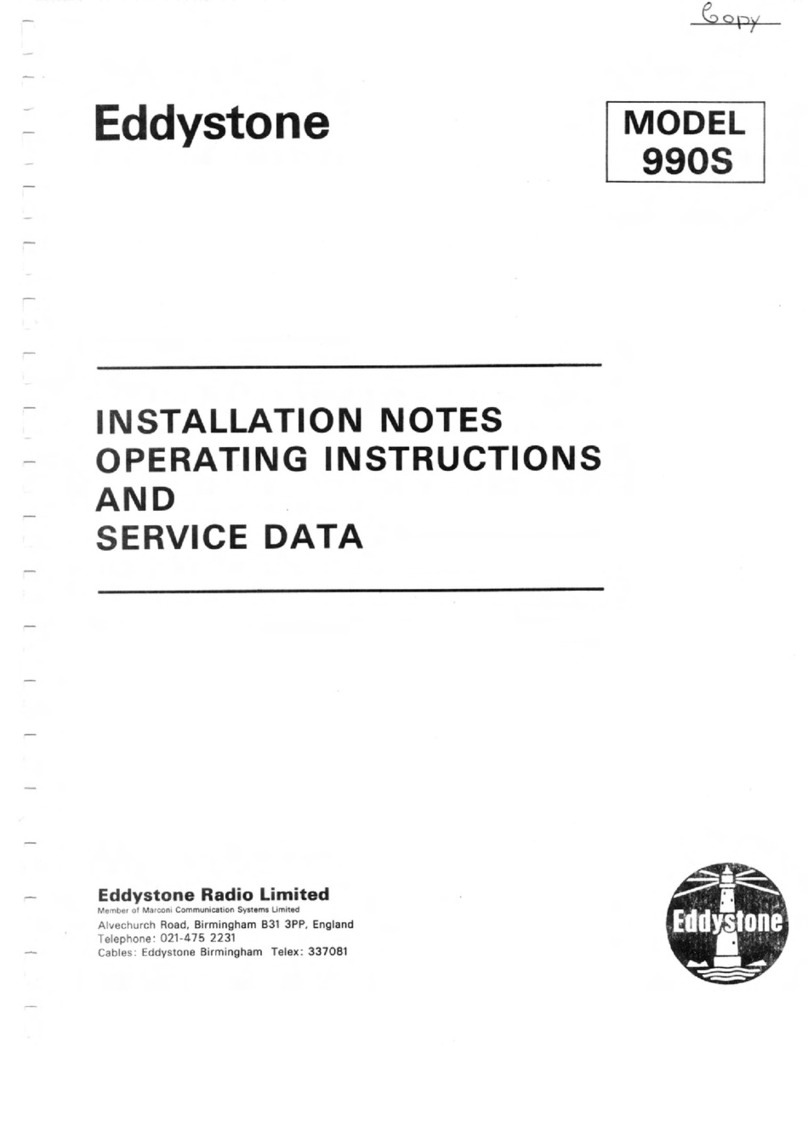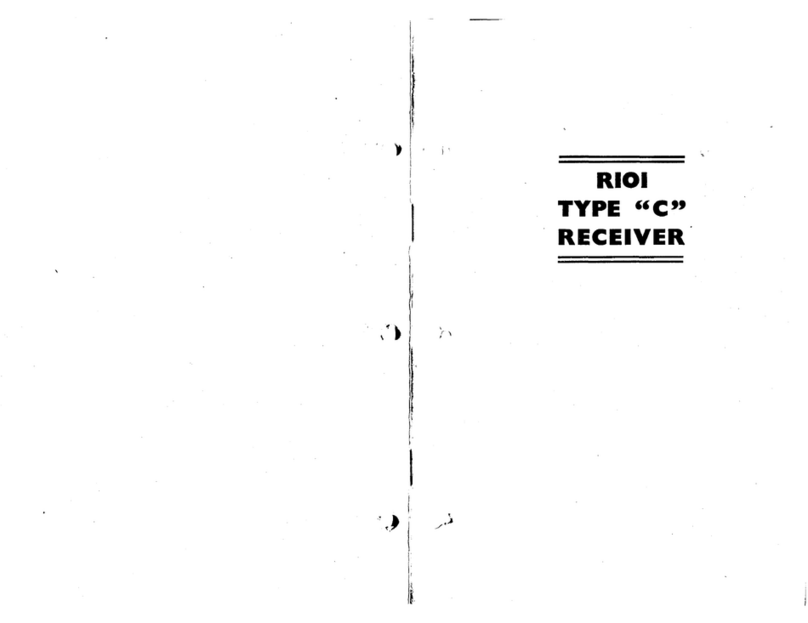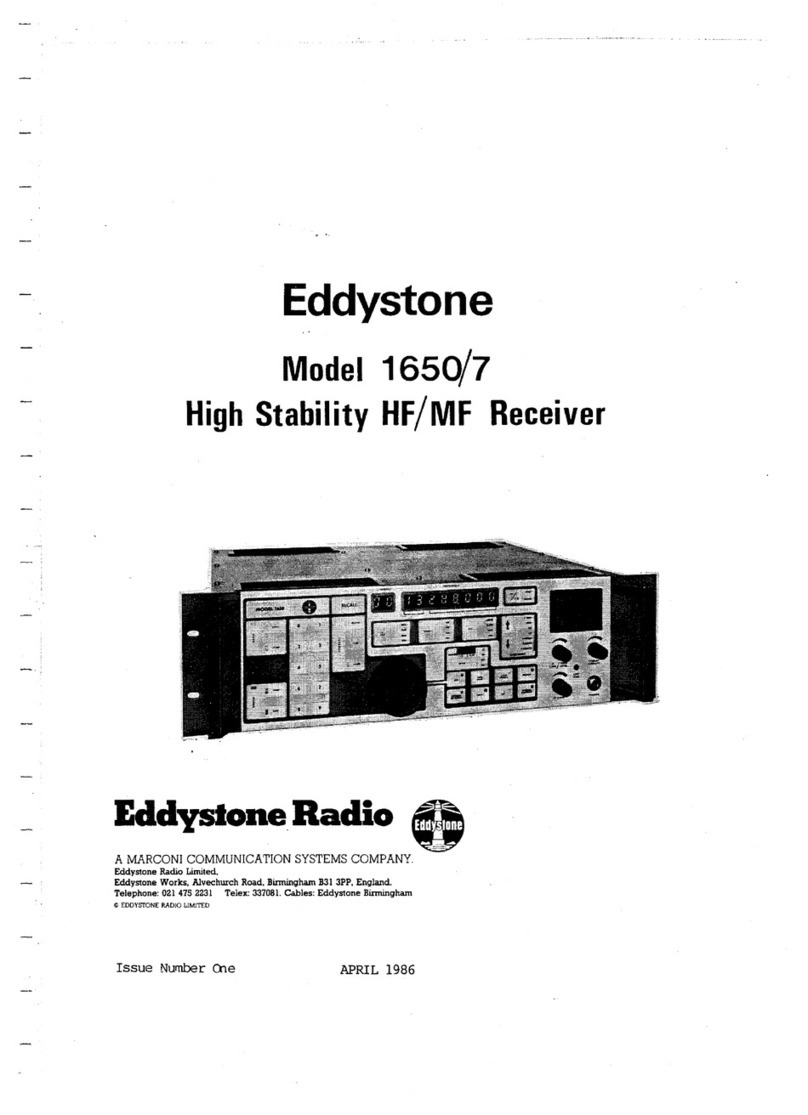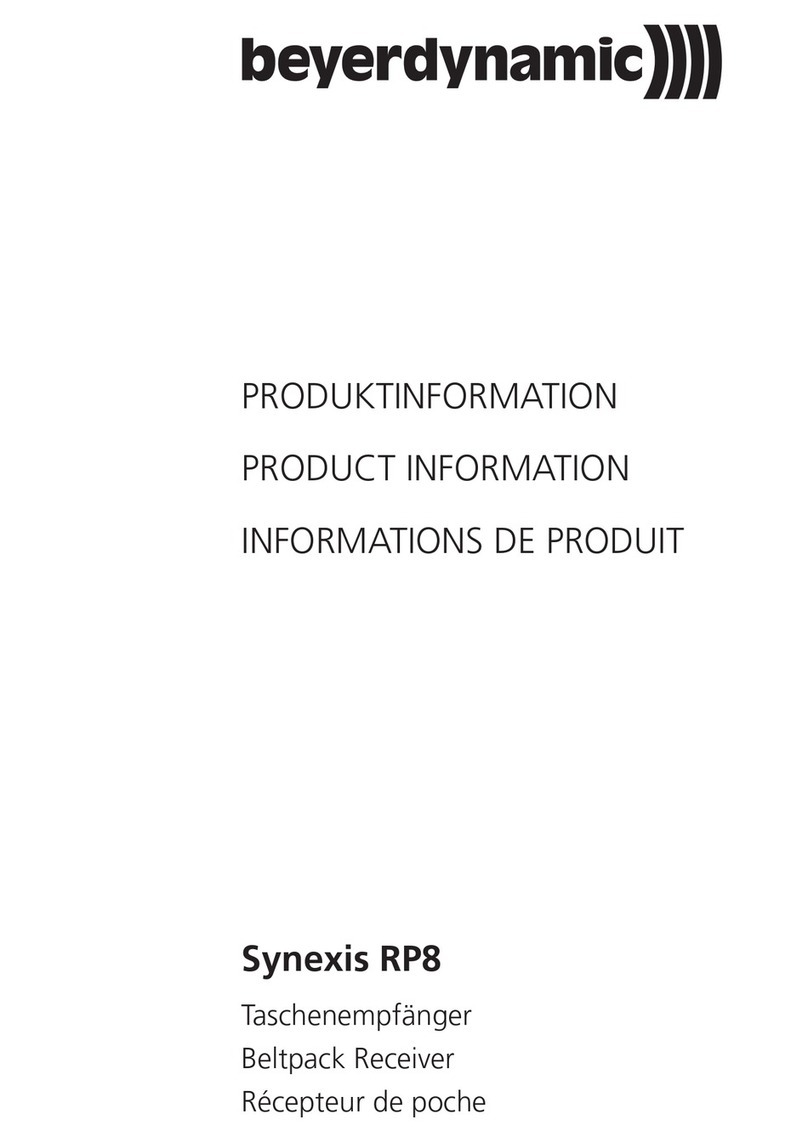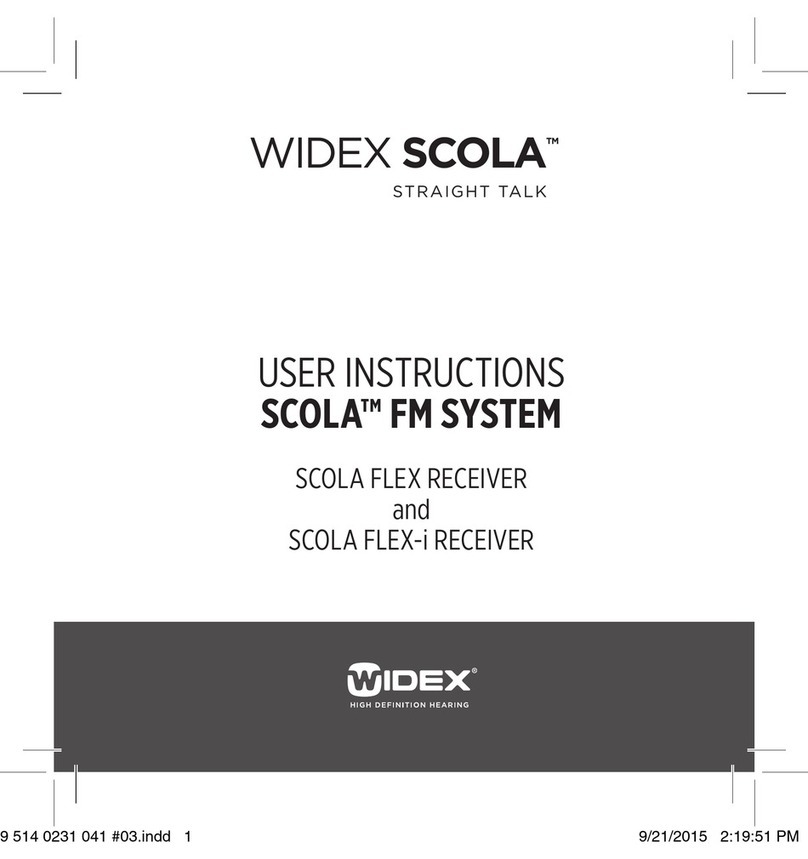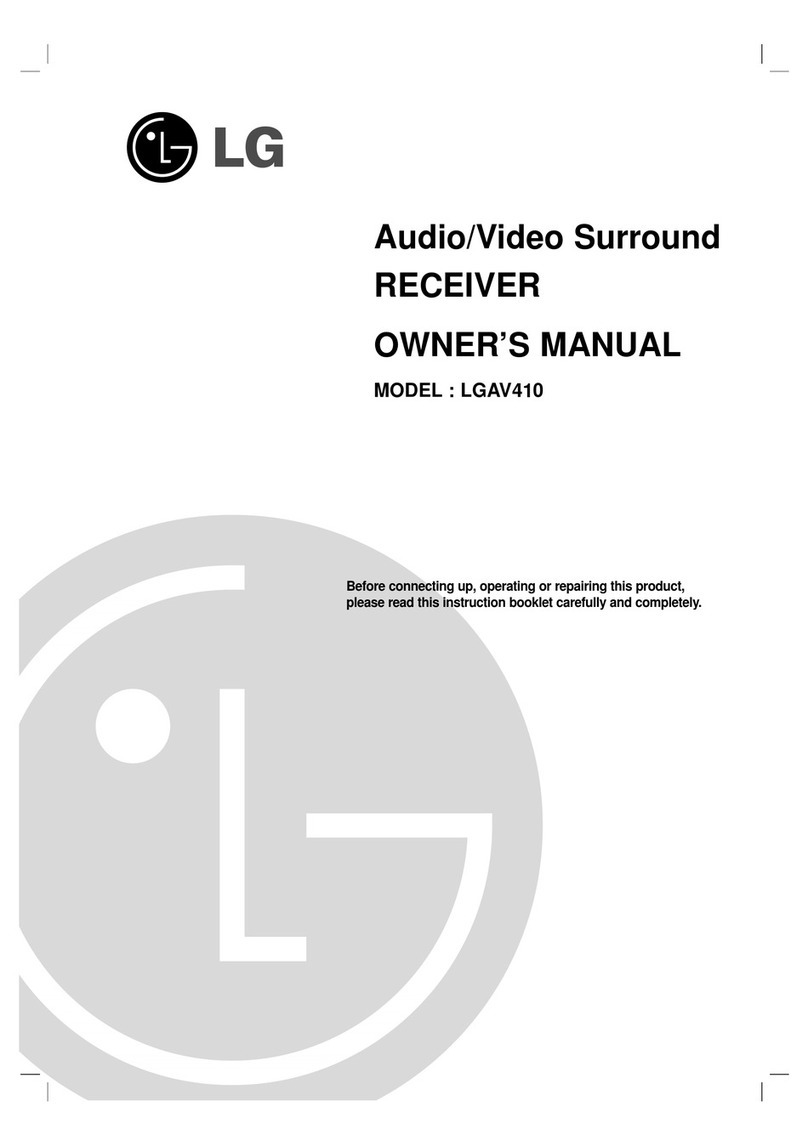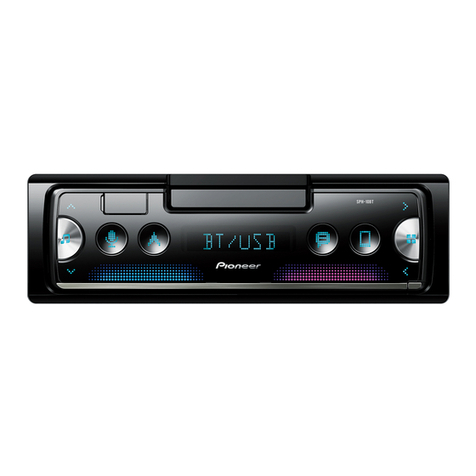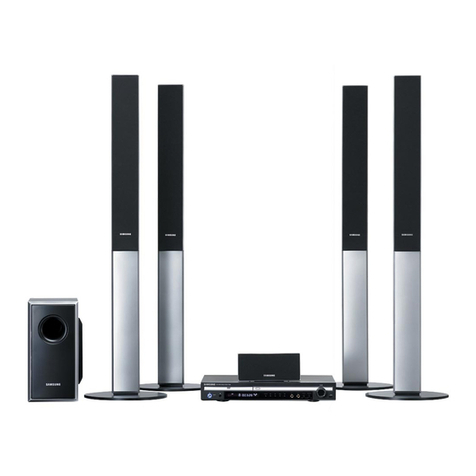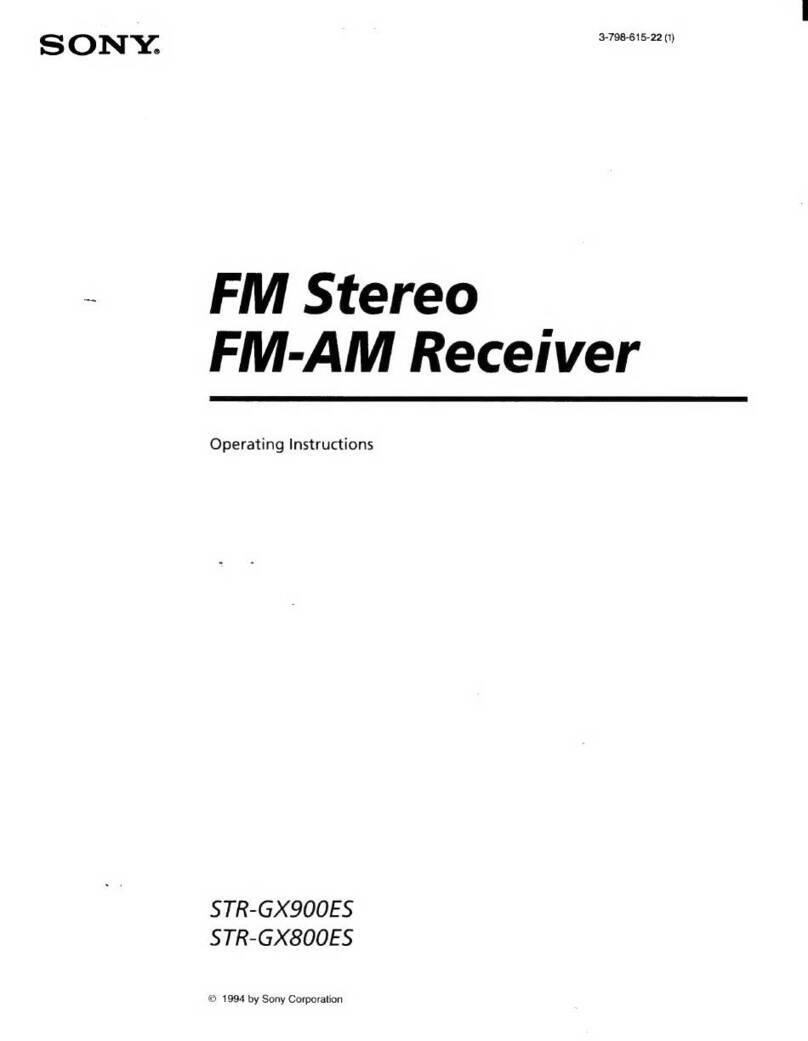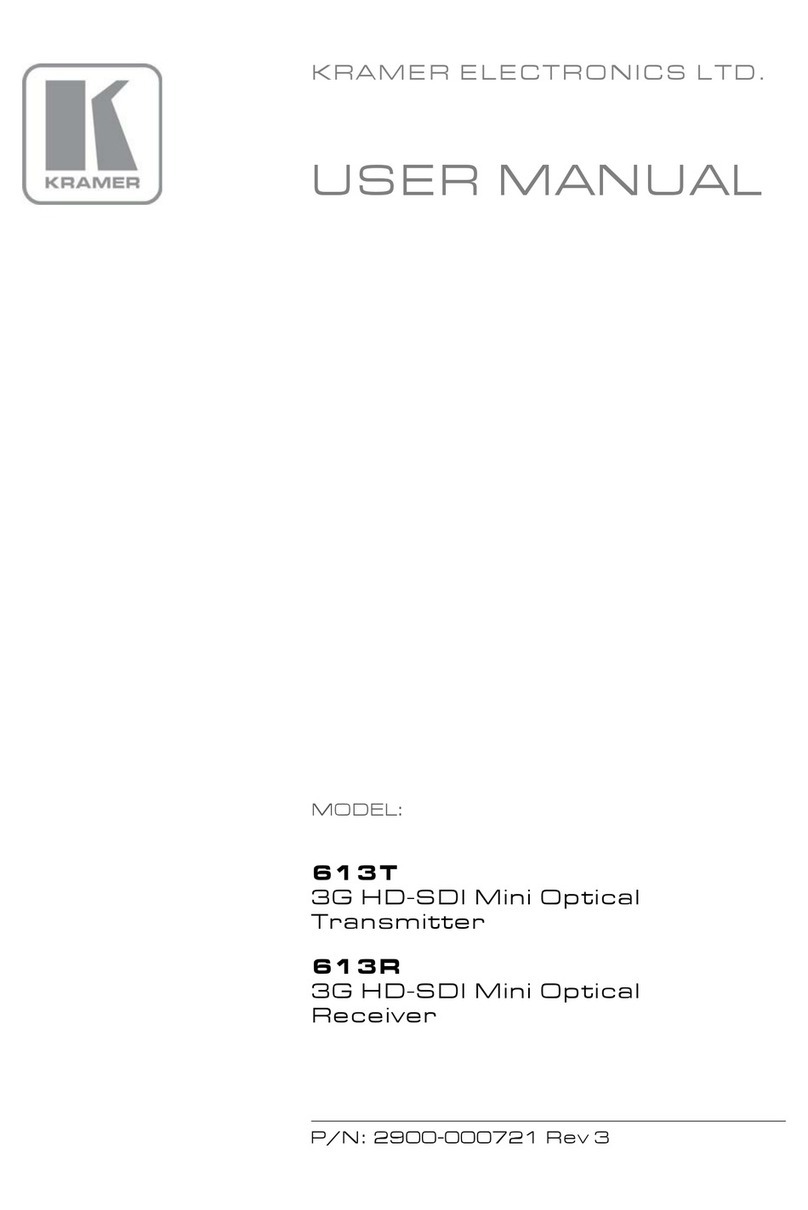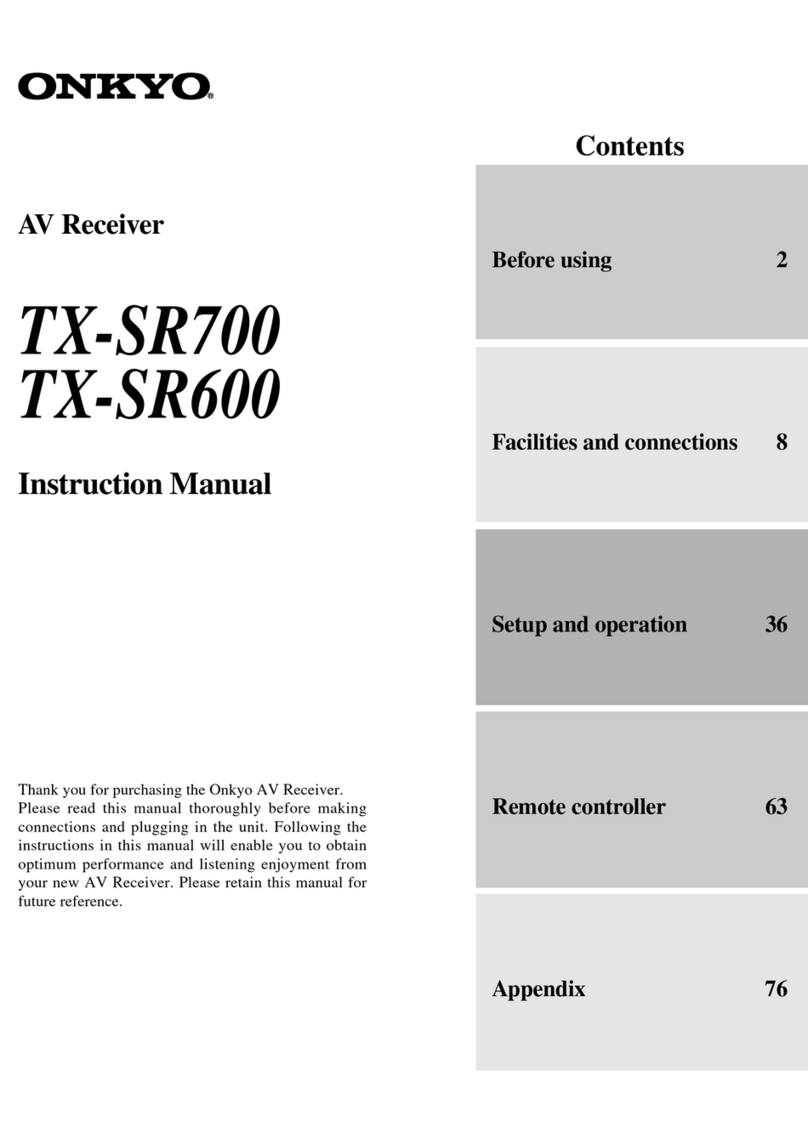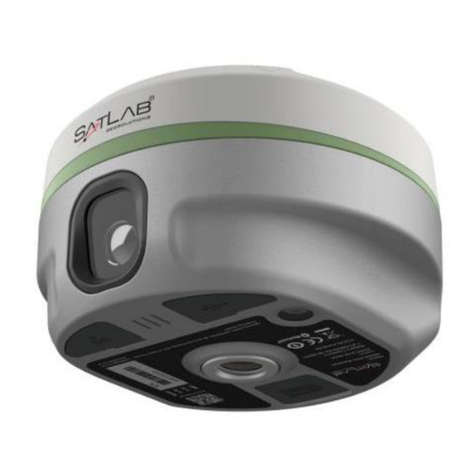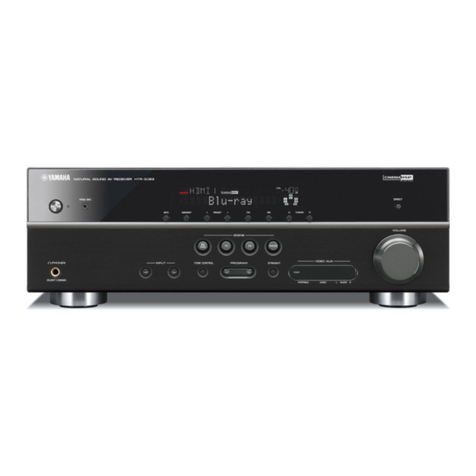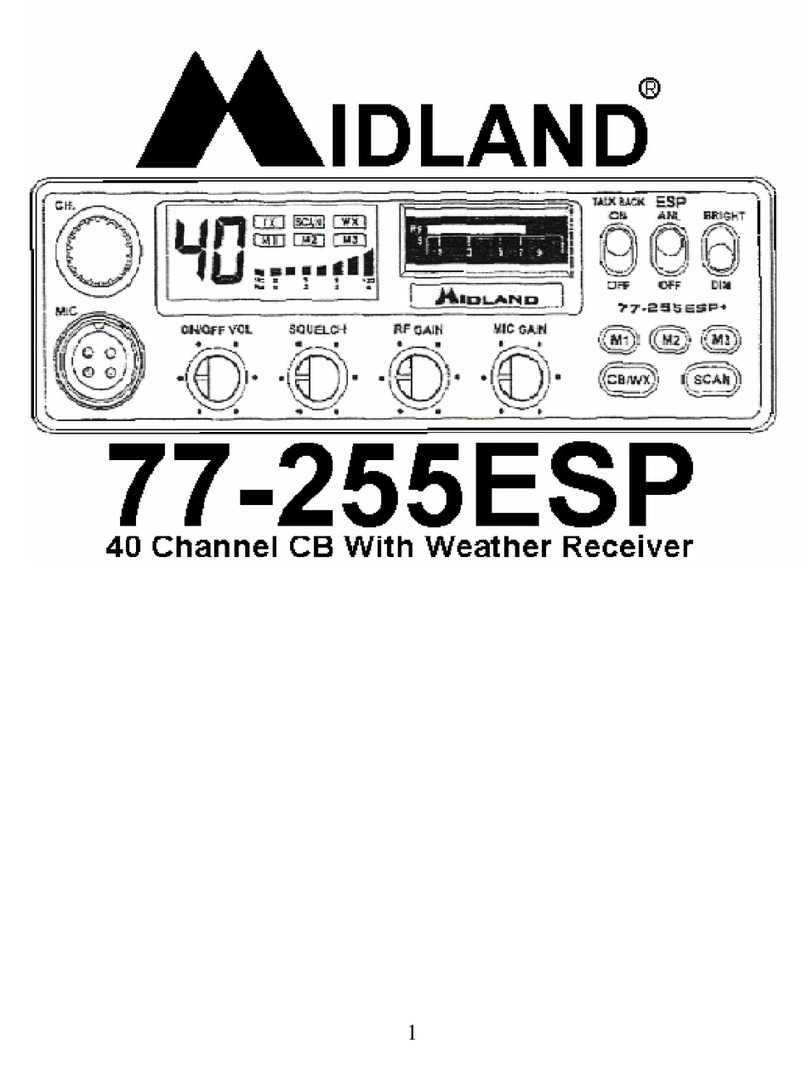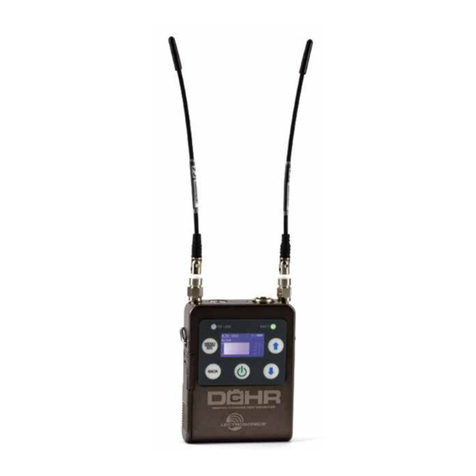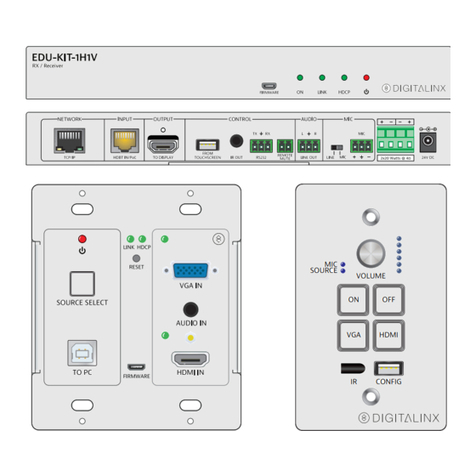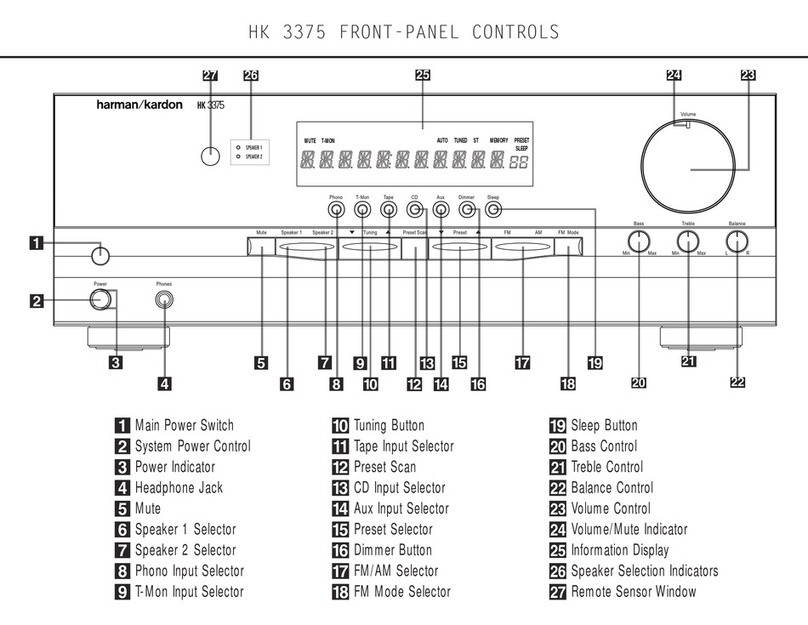Eddystone 840C User manual

-DDYSIO
COMMUNICATIONS
RECEIVER
MODEL
The
EDDYSTONE
Model
840C
is
a
single
conversion
communications
superhet
receiver
covering
the
band
480
kc/s
to
30
Mc/s
in
five
overlapping
ranges.
Provision
is
made
for
the
reception
of
both
AM
and
CW
signals
and
although
the
receiver
is
not
designed
specifically
for
SSB
reception,
such
signals
can
be
received
with
careful
tuning.
The
receiver
has
a
built-in
power
unit
allowing
operation
from
all
standard
AC
and
DC
mains
supplies.
An
internal
loud-
speaker
is
fitted
and
provision
is
made
for
connection
of
an
external
speaker
unit.
Telephones
can
be
plugged
into
a
socket
on
the
front
panel
when
a
speaker
output
is
not
required.
Ease
of
operation
is
assured
by
the
logical
positioning
and
convenient
dimensions
of
the
major
controls.
The
high
grade
gear
driven
slow
motion
tuning
system
allows
extremely
fine
tuning,
while
the
flywheel
loading
permits
rapid
movement
from
one
end
of
a
range
to
the
other.
Dial
calibration
is
directly
in
terms
of
trequency,
the
scales
being
linear
and
easy
to
read.
A
calibrated
vernier
is
used
in
conjunction
with
a
special
logging
scale
so
that
dial
settings
can
be
recorded
for
future
use.
A
visual
tuning
indicator
is
fitted
as
a
further
aid
to
accurate
tuning.
Independent
manual
gain
controls
together
with
an
efficient
automatic
gain
control
circuit
allow
the
receiver
to
be
set
for
all
levels
of
input
signal
and
tone
can
be
adjusted
by
means
of
a
panel
control.
Advanced
design,
rugged
construction
and
high
quality
components
are
used
throughout;
the
receiver
is
of
a
most
convenient
size,
contemporary
in
appearance
and
suitable
for
continuous
operation
in
all
areas
under
extreme
climatic
conditions.
The
five
frequency
ranges
are
as
follows
:—
Range
|.
12-4
-
30
Me/s.
Range
2
5:2
—
12:9
Me/s.
Range
3.
2:5
-
6:1
Mejs.
Range
4.
1-12
—
2:58
Me/s.
Range
5.
480
—
1150
ke/s.
840C

CIRCUIT
DESCRIPTION
The
840C
is
an
eight
valve
model
and
can
be
used
on
all
AC/DC
mains
supplies
in
the
ranges
100/125V
and
200/250V.
It
has
a
single
stage
of
RF
amplification
using
a
high
gain
pentode
type
UAF42
(VI)
and
a
combined
Mixer
and
Local
Oscillator
V2.
This
stage
employs
a
UCH42
triode-hexode
in
which
the
triode
portion
functions
as
a
tuned
anode
oscillator.
Normal
ganged
tuning
is
employed
in
conjunction
with
a
switched
five
range
coil
unit
using
precision
wound
inductors.
The
IF
output
from
the
Mixer
Stage
is
at
450
kc/s
and
a
single
stage
of
amplification
is
provided
at
this
frequency.
Two
permeability
tuned
transformers
provide
excellent
selectivity
and
the
IF
valve
(V3)
is
a
UAF42.
The
diode
in
the
IF
valve
envelope
is
used
as
AGC
Rectifier
and
controls
the
RF,
IF
and
Mixer
Stages
on
Ranges
3,
4
and
5
while
on
Ranges
|
and
2
the
RF
and
IF
Stages
only
are
controlled
to
prevent
oscillator
pulling.
AGC
is
removed
from
all
stages
when
the
BFO
is
switched
in
and
it
should
be
noted
that
the
AGC
delay
is
affected
by
the
RF
Gain
control
which
should
always
be
set
to
maximum
when
AGC
is
in
use.
The
visual
tuning
indicator
V4
which
ts
a
miniature
DM70
is
controlled
by
the
Detector
Stage
and
is
therefore
operative
with
or
without
AGC.
V5
is
another
UAF42
serving
as
Signal
Detector
and
Ist
Audio
Amplifier.
The
detector
is
a
series
diode
type
and
the
pentode
portion
of
the
valve
is
fed
from
the
AF
Gain
control
which
forms
part
of
the
detector
load.
Output
from
the
pentode
is
resistance-capacity
coupled
to
the
following
valve
V7
(UL41l).
Negative
feed-back
is
applied
to
this
stage
and
the
high
quality
output
transformer
feeds
either
a
loudspeaker
or
low
impedance
telephones.
Tone
control
is
by
means
of
a
variable
resistor
(RV3)
in
series
with
a
capacitor
across
the
primary
of
the
output
transformer.
The
Beat
Frequency
Oscillator
(V6)
is
also
a
UAF42
and
employs
a
conventional
electron
coupled
circuit.
The
frequency
of
oscillation
is
variable
by
means
of
a
panel
control
to
permit
adjustment
of
the
pitch
of
the
note
when
receiving
CW
signals.
Two
gain
controls
are
provided,
the
RF
Gain
which
takes
the
form
of
a
variable
resistor
in
series
with
the
common
cathode
return
of
VI
and
V3
and
the
AF
Gain
which
is
a
potentiometer
control
in
the
output
of
the
signal
detector.
Provision
is
made
for
desensitising
the
receiver
when
it
is
not
required
but
must
be
available
for
immediate
use.
This
is
achieved
by
means
of
the
Standby
switch
which
applies
a
large
bias
to
the
RF
and
IF
stages
when
switched
to
‘
standby.’
HT
supplies
remain
on
all
stages
during
standby
periods
so
that
frequency
stability
is
maintained
when
the
receiver
is
not
in
use.
The
power
supply
circuitry
is
quite
conventional
and
includes
the
normal
half
wave
rectifier
V8
(UY41),
the
smoothing
circuit
and
the
ballast
resistor
which
feeds
the
series/parallel
connected
heater
chain.
A
thermistor
is
incorporated
in
this
circuit
to
reduce
the
current
surge
at
‘switch-on’
and
this
prolongs
the
life
of
the
valves
used
in
the
receiver.
No
indicator
lamp
is
fitted
since
this
function
is
effectively
performed
by
the
visual
tuning
indicator
which
exhibits
a
blue
glow
when
the
receiver
is
operative.
CONSTRUCTION
The
chassis
assembly
in
the
840C
is
totally
isolated
from
the
panel
and
cabinet
and
complies
with
the
relevant
standards
with
regard
to
safety
from
shock
applicable
to
AC/DC
equipment.
Specially
fabricated
insulating
pieces
are
employed
at
all
fixing
points
between
the
chassis
and
the
remainder
of
the
unit
and
when
correctly
installed
the
cabinet
and
panel
are
directly
earthed
and
the
internal
chassis
is
totally
inaccessible.
All
the
fixing
arrangements
for
control
knobs,
switches,
etc.
are
either
fully
insulated
by
virtue
of
their
inaccessibility
or
are
directly
earthed
to
the
panel.
Aerial
connections,
etc.
are
also
completely
safe.
The
chassis
assembly
is
made
up
in
three
parts.
These
are
the
central
coil
unit
which
is
an
aluminium
diecasting,
the
IF/AF
chassis
and
the
Power
Unit
chassis.
The
IF/AF
chassis
is
made
from
brass
and
is
mounted
to
the
right
of
the
coil
unit.
The
Power
Unit
is
built
on
a
rustproofed
steel
chassis
and
occupies
the
same
relative
position
as
the
[F/AF
chassis
but
to
the
left
of
the
coil
unit.
The
panel
is
an
aluminium
diecasting
having
four
fixing
holes
for
attachment
of
the
coil
unit.
At
the
extreme
ends
of
the
panel
are
the
two
steel
chassis
support
plates
which
make
direct
contact
with
the
panel
but
are
insulated
from
the
chassis
which
they
support.
Fixing
to
the
panel
is
by
means
of
the
four
screws
which
secure
the
chromium
plated
panel
handles.
These
handles
make
for
ease
in
lifting
the
receiver
and
also
allow
it
to
be
placed
*
face-down’
when
removing
the
cabinet.
Ample
clearance
is
provided
to
avoid
damage
to
the
panel
controls
when
the
receiver
is
placed
in
this
position.
The
high
flux
64”
speaker
unit
is
mounted
on
the
left-hand
chassis
support
plate
and
precautions
have been
iaken
to
avoid
undesirable
cabinet
resonance.
The
cabinet
is
stoutly
made
from
rustproofed
steel,
is
provided
with
adequate
ventilation
areas
and
a
loudspeaker
grille
:
apertures
at
the
rear
allow
connection
to
the
aerial.
external
speaker,
etc.
The
cabinet
is
easily
removed
after
taking
out
the
four
large
screws
at
the
back.
All
external
connections
with
the
exception
of
the
telephone
socket
are
located
on an
insulated
panel
positioned
at
the
rear
of
and
extending
the
full
width
of
the
chassis
assembly.
It
is
attached
to
the
chassis
support
plates
and
serves
to
support
the
rear
of
the
coil
unit
and
the
sub-chassis
which
make
up
the
complete
chassis
assembly.
Plan
view
of
receiver
INSTALLATION
Mains
Voltage
Adjustment
The
Model
840C
can
be
operated
equally
well
from
either
AC
or
DC
mains
supplies.
No
adjustment
is
necessary
when
changing
from
AC
to
DC
but
it
is
important
to
check
that
the
voltage
selector
at
the
rear
of
the
receiver
is
set
to
suit
the
local
mains
voltage
before
making
connection
to
the
supply.
When
despatched
from
the
factory,
the
selector
is
placed
in
the
230V
position
which
is
correct
for
operation
from
mains
voltages
in
the
range
225-250V.
If
the
local
mains
supply
is
between
200-22S5V
the
selector
plug
should
be
withdrawn
from
the
230V
socket
and
plugged
into
the
200V
position.
The
110V
socket
is
suitable
for
mains
supplies
in
the
range
100-125V.
Mains
Connections
and
Earthing
The
mains
input
is
taken
via
a-small
plug
and
socket
at
the
rear
of
the
cabinet,
the
plug
being
ready
wired
with
six
feet
of
three-core
mains
cable.
One
end
of
the
cable
is
lett
free
so
that
the
user
can
fit
a
plug
of
a
type
suitable
for
connection

to
the
local
mains
supply.
If
the
existing
cable
proves
too
short,
it
can
easily
be
disconnected
from
the
plug
and
replaced
by
a
longer
length.
In
most
cases
the
existing
length
will
be
adequate
and
this
is
coded
as
follows
:—
Red:
Live
(Positive
DC),
Black:
Neutral
(Negative
DC),
Green
:
Earth.
When
it
is
necessary
to
fit
a
two-pin
mains
plug
in
lieu
of
the
more
usual
three-pin
type,
the
green
lead
should
be
cut
off
short
and
pressed
back
into
the
cable
covering
so
that
there
is
no
chance
of
it
shorting
to
the
other
leads.
With
three-pin
plugs
the
green
lead
should
be
connected
to
the
thicker
of
the
three
pins.
Inside
the
set
the
green
lead
is
connected
directly
to
the
cabinet
and
panel
and
if
the
mains
earth
is
reasonably
short
there
will
be
no
need
to
connect
an
earth
at
socket
‘
E.”
However,
if
the
mains
earth
is
rather
long,
improved
reception
may
be
obtained
if
socket
‘E”
is
connected
to
a
more
direct earth.
It
is
important
to
note
that
in
cases
where
there
is
no
con-
nection
to
socket
*E,’
the
plug
supplied
must
still
be
in
position
to
complete
the
earth
to
the
internal
chassis.
Leaving
the
plug
out
will
reduce
the
sensitivity
of
the
receiver
especially
when
using
single
wire
aerials.
When
there
is
no
connection
to
the
green
earth
lead
an
earth
must
be
connected
to
socket
‘
E.’
On
AC
supplies
when
a
three-pin
plug
is
in
use,
the
red
lead
should
be
connected
to
the
pin
that
engages
with
the
right-hand
socket
of
the
wall
fitting.
This
is
true
on
the
assumption
that
the
wall
fitting
is
wired
correctly
but
if
as
is
sometimes
the
case
the
wall
fitting
is
wired
incorrectly,
it
may
be
found
that
an
objectionable
hum
appears
in
the
output
from
the
receiver.
Reversing
the
connections
to
the
plug
will
remove
the
hum.
Two-pin
AC
plugs
should
be
reversed
if
a
hum
is
present
and
can
then
be
marked
to
indicate
the
correct
orientation.
On
DC,
the
receiver
will
function
only
if
the
polarity
of
the
supply
is
correct.
Thus,
if
the
set
fails
to
operate
after
the
normal
warming
up
period,
reversal
of
the
plug
will
clear
the
trouble.
The
Aerial
The
Model
840C
is
an
extremely
sensitive
receiver
and
will
give
a
good
account
of
itself
even
on
poor
indoor
aerials.
For
best
possible
reception
an
outside
antenna
is
a
worthwhile
investment.
This
can
be
any
length
up
to
some
100
feet
or
so,
well
insulated
and
situated
clear
of
all
local
obstructions
especially
those
of
a
metallic
nature.
Single
wire
aerials
of
this
type
are
connected
at
the
right-hand
socket
labelled
*
A.’
The
shorting
plug
must
be
in
position
between
the
other
‘A’
socket
and
earth.
For
improved
reception
over
restricted
frequency
bands
(or
when
local
noise
is
a
problem)
a
dipole
cut
to
the
correct
length
is
probably
the
most
suitable
arrangement.
Aerials
of
this
type
have
a
‘
T”
formation
with
a
twin
balanced
feeder
which
helps
to
reduce
noise
pick-up
on
the
lead-in.
When
using
a
dipole
aerial,
the
shorting
plug
is
removed
and
the
two
feeder
wires
are
connected
to
the
two
‘A’
sockets.
Other
advantages
of
the
dipole
are
that
the
feeder
can
be
of
any
length
so
allowing
the
aerial
proper
(the
top
portion
of
the
‘T')
to
be
placed
in
the
most
suitable
position,
while
the
feeder
can
be
run
close
to
obstructions
without
adverse
effect
on
the
performance.
A
disadvantage
of
the
dipole
is
that
performance
is
only
optimum
over
the
band
for
which
it
is
designed.
Improved
performance
can
sometimes
be
obtained
on
frequencies
for
which
the
dipole
is
not
resonant
if
the
twin
feeders
are
strapped
together
and
connected
to
the
right-hand
*
A’
socket.
In
this
case,
the
shorting
plug
should
be
in
position
since
the
aerial
is
effectively
a
single
wire
arrangement.
The
overall
length
of
a
dipole
is
calculated
by
dividing
the
frequency
in
Mc/s
into
468.
The
result
will
be
in
feet
and
some
idea
of
actual
lengths
can
be
obtained
from
the
figures
for
the
amateur
communication
bands which
are
listed
below.
Band
(Metres)
160
80
40
20
15
10
Freq.
(M¢/s.)
i
oR
7
14
21
28
Length
(tft.)
264
+132
66
33
22
16-5
Connecting
an
External
Loudspeaker
An
external
loudspeaker
can
be
connected
after
taking
out
the
internal
speaker
plugs
at
the
rear
of
the
set
(labelled
L.S.
—
2:5
ohms).
The
external
speaker
should
be
fed
with
standard
twisted
flex
terminated
with
suitable
plugs.
No
transformer
is
required
and
the
speaker
should
be
a
standard
2-5/3
ohm
type.
Both
speakers
can
be
operated
simultaneously
if
their
leads
are
connected
in
parallel
but
there
will
be
some
drop
in
the
volume
level
of
each
speaker.
OPERATION
Once
the
receiver
has
been
correctly
installed
it
can
be
switched
on
by
rotating
the
tone
control
in
a
clockwise
direction
to
operate
the
mains
switch
which
is
ganged
to
it.
A
short
period
will
elapse
during
which
the
valve
heaters
will
reach
operating
temperature
prior
to
the
receiver
becoming
fully
operative.
A
check
should
be
made
that
the
standby
switch
is
in
the
down
position.
The
AGC/BFO
switch
should
be
set
to
*
AGC’
for
telephony
reception
or
‘
BFO’
if
CW
reception
is
required.
In
the
case
of
telephony,
best
AGC
action
will
be
obtained
if
the
RF
Gain
is
fully
advanced.
Under
these
conditions
the
volume
level
is
controlled
by
means
of
the
AF
Gain
at
the
extreme
right-hand
side
of
the
panel.
For
CW
reception
the
AF
Gain
should
be
advanced
and
the
RF
Gain
turned
down
to
prevent
over-
loading
of
the
receiver
on
strong
signals.
A
little
practice
will
result
in
a
natural
balance
being
found
in
the
settings
of
the
two
controls.
The
BFO
Pitch
control
permits
adjustment
of
the
audible
beat
obtained
when
receiving
CW
signals.
The
control
will
normally
be
offset
slightly
to
provide
a
note
of
about
1000
cycles
for
maximum
readability.
The
same
beat
can
be
obtained
at
two
settings
of
the
control
and
it
may
be
found
that
one
setting
gives
less
interference
than
the
other.
If
the
receiver
is
not
required
but
must
be
ready
for
instant
use,
the
standby
switch
should
be
placed
at
standby
(up
position).
Frequency
stability
is
held
within
close
limits
during
standby
periods
since
the
local
oscillator
remains
in
operation
at
all
times.
The
setting
of
the
tone
control
may
be
decided
by
the
quality
required
or
alternatively
by
the
type
of
interference
and
type
of
signal
being
received.
Some
experimentation
with
the
adjustment
of
this
control
will
be
found
invaluable.
In
cases
where
loudspeaker
reception
is
not
convenient,
telephones
can
be
connected
at
the
socket
on
the
panel.
The
speaker
is
automatically
cut
when
the
phone
plug
is
inserted.
All
standard
Broadcast
bands
are
marked
in
red,
Amateur
allocations
in
black.
Dial
settings
can
be
recorded
for
future
reference
by
combining
the
vernier
scale
reading
with
the
setting
on
the
bottom
logging
scale.
A
rar
©
Sit
Ste.
7
L41/C33
112/035
L13/C37
L14/C40 L15/C43
eee
ESS
i"
SHS
\
|
L6iC19 L7IC20
LBIC21
L9/C22
L10/C23
a
Si
NNN
jl
Stay
Lic4
L2icé6 L3/Cc7
L4/C8
LS/C9
U—FUSES
MAINS
L
VOLTAGE
SELECTOR
INPUT
SPEAKER
PLUGS
ul
EARTH
PLUG
Underside
view
of
receiver

SERVICING
INSTRUCTIONS
CAUTION.
The
Model
840C
is
a
universal
type
and
great
care
should
be
taken
when
carrying
out
tests
with
the
cabinet
removed.
When
running
from
AC
supplies
it
is
advisable
to
ensure
that
the
chassis
is
connected
to
the
neutral
pole
of
the
supply.
If
an
isolation
transformer
is
available
this
will
be
found
more
convenient
and
can
be
operated
at
an
output
voltage
of
110V
as
a
further
safety
precaution.
Should
the
receiver
fail
in
operation,
first
check
that
all
external
connections
are
correctly
made
and
also
that
mains
voltage
is
available
at
the
supply
point.
Next
check
the
fuses.
These
are
located
in
insulated
holders
at
the
rear
of
the
receiver
and
are
easily
removed
without
risk
of
electric
shock.
Visual
inspection
will
reveal
whether
or
not
a
fuse
has
blown.
Replacements
should
be
standard
14”
cartridge
types
rated
at
500
mA
(4
Amp).
If
a
blown
fuse
is
changed
and
the
replace-
ment
burns
out
immediately
or
after
a
very
short
period
of
Operation,
it
is
an
indication
that
some
‘internal
component
is
faulty.
In
this
case
the
receiver
should
be
taken
to
the
nearest
EDDYSTONE
Agent
who
will
rectify
the
trouble
at
a
reasonable
charge.
If
it
is
necessary
to
take
the
receiver
to
an
engineer
who
is
not
familiar
with
Eddystone
equipment,
take
this
instruction
sheet
with
the
set.
It
contains
information
which
may
enable
him
to
clear
the
fault
more
rapidly
than
would
otherwise
be
the
case.
Valve
Replacement
All
the
valves
used
in
the
Model
840C
are
easily
accessible
when
the
cabinet
is
removed.
All
except
the
tuning
indicator
have
B8A
bases.
The
pins
on
these
bases
are
equally
spaced
and
correct
location
of
the
valve
in
relation
to
the
holder
is
achieved
by
means
of
a
small
glass
pip
on
the
side
of
the
envelope
base.
This
locates
with
a
retaining
slot
in
the
base
fitting.
Care
should
be
exercised
in
removing
and
replacing
valves
not
to
exert
any
sideways
strain
since
this
could
result
in
fracture
of
the
glass
envelope.
The
visual
tuning
indicator
has
a
miniature
B8D
base
and
is
retained
in
a
small
metal
clip.
_
The
indicator
can
be
removed
by
sliding
it
out
of
the
clip
after
freeing
it
from
the
base.
When
fitting
a
replacement
indicator
it
will
be
necessary
to
trim
the
four
long
lead-out
wires
to
the
same
length
as
the
four
shorter
ones.
The
leads
should
be
carefully
straightened
to
line
up
with
the
sockets
so
that
the
indicator
can
be
plugged
into
its
base.
When
sliding
back
into
the
clip,
make
sure
that
the
‘keyhole’
in
the
indicator
lines
up
with
the
aperture
in
the
scale
plate.
Pointer
Drive
Cord
Replacement
In
the
unlikely
event
of
the
drive
cord
either
breaking
or
slipping
out
of
the
pulley
grooves,
replacement
will
be
much
simplified
(even
when
the
original
cord
is
undamaged)
if
a
new
length
is
obtained.
This
can
be
made
longer
than
the
length
actually
required
(3’
82”)
and
will
therefore
be
easier
to
handle.
Replacement
will
present
no
problems
if
the
following
instructions
are
followed
carefully.
NOTE:
In
these
instructions,
left
and
right
are
as
viewed
from
the
rear
of
the
receiver.
1.
Remove
the
cabinet
after
taking
out
the
four
retaining
screws
at
the
rear.
Take
off
the
old
drive
cord
by
slackening
the
8BA
screws
let
into
the
drive
pulleys.
N
3.
Set
the
tuning
control
so
that
the
tuning
gang
is
fully
meshed.
4.
Secure
one
free
end
of
the
replacement
cord
to
the
8BA
screw
in
the
left-hand
drive
pulley.
Feed
the
cord
through
the
pulley
slot
and
into
the
groove
nearest
the
panel
(cord
leaving
pulley
from
right
to
left).
a
6.
Pass
the
cord
below
the
tuning
indicator,
clockwise
round
the
jockey
pulley
and
across
the
dial
between
the
pointer
guide
rods.
Sufficient
tension
should
be
applied
to
cause
the
jockey
pulley
to
take
up
a
position
one
quarter
of
an
inch
from
the
guide
rod
support
bracket.
7.
Move
the
pointer
to
the
right-hand
end
of
the
guide
rods
(nearest
to
speaker)
and
slide
the
cord
up
and
over
the
retaining
spring.
The
spring
may
be
depressed
slightly
to
simplify
this
operation.
8.
Take
the
cord
round
the
right-hand
guide
pulley
and
across
towards
the
right-hand
drive
pulley.
9.
Lay
the
cord
in
the
groove
nearest
to
the
panel
and
wind
three
complete
turns
in
an
anti-clockwise
direction.
Ensure
that
the
cord
lies
snugly
in
the
pulley
grooves
and
that
the
tension
is
maintained
at
the
jockey
pulley.
10.
Holding
the
free
end
of
the
cord
reasonably
tight.
rotate
the
tuning
control
to
unmesh
gang.
Approximately
three
turns
of
the
control
will
be
required
and
this
Operation
will
place
the
tie-off
screw
in
the
drive
pulley
in
an
accessible
position.
Il.
Press
the
cord
into
the
pulley
slot,
round
8BA
screw
and
secure.
12.
Check
that
the
jockey
pulley
is
correctly
tensioned
and
then
cut
off
the
surplus
cord
at
the
right-hand
drive
pulley.
13.
Move
gang
to
tully
meshed
position
and
set
pointer
to
“O°
on
logging
scale.
Check
drive
for
free
and
normal
Operation
and
correct
vernier
tracking.
14.
Check
the
dial
calibration
against
a
suitable
frequency
standard.
15.
Replace
cabinet
and
fit
retaining
screws.
Cleaning
the
Scale
and
Scale
Window
1.
Locate
the
three
screws
disposed
vertically
at
each
end
of
the
rear
of
the
scale
plate.
Take
out
the
centre
screw
at
each
end
and
remove
the
small
side
castings
at
the
extremities
of
the
glass
window.
2.
Remove
the
four
countersunk
screws
along
the top
edge
of
the
panel
and
take
out
the
white
scale
suppor.
3.
The
glass
is
now
free
and
can
be
removed
by
lifting
up
and
tilting
back
slightly.
Re-alignment
—
General
In
the
unlikely
event
of
a
complete
re-alignment
being
necessary
the
following
instructions
should
be
followed
in
full.
In
the
more
usual
case
of
partial
alignment
required
to
compensate
for
ageing
components,
etc.
the
relevant
instructions
can
be
extracted
as
required.
It
should
be
stressed
that
alignment
adjustments
should
not
be
tampered
with
unless
there
is
a
clear
indication
that
re-
alignment
is
in
fact
required.
Adjustment
should
only
be
carried
out
by
fully
skilled
technicians
equipped
with
adequate
test
equipment.
Re-alignment
of
the
[F
Transformers
and
BFO
First
disable
the
local
oscillator
by
shorting
out
the
forward
section
of
the
tuning
gang
(Clic).
Set
the
Range
switch
to
5,
tuning
to
S00
kc/s
and
the
RF
and
AF
Gain
conirols
to
maximum.
The
Tone
control
should
be
rotated
fully
clockwise
and
the
AGC/BFO
switch
set
to
AGC
to
disable
the
BFO.
The
AGC
line
should
be
connected
to
chassis
either
at
S2a
or
at
Tl.
Connect
the
signal
generator
output
leads
via
0-01
mfd
isolating
capacitors
to
the
Mixer
section
of
the
tuning
gang
(Cl1b).
Unplug
the
internal
speaker
connections
at
the
rear
and
connect
an
output
meter
matched
to
2:5/3
ohms
in
their
place.
Allow
some
10
minutes
for
warming
up
and
then
tune
the
signal
generator
to
450
ke/s
with
modulation
at
a
depth
of
30%
(400
c/s).
Adjust
the
attenuator
for
a
convenient
output

and
then
peak
the
cores
in
Tl
and
T2
for
maximum
reading
on
the
meter.
It
should
be
noted
that
the
cores
in
TI
are
set
to
the
outer
peak
and
those
in
T2
to
the
inner
peak.
increase
the
attenuation
as
alignment
proceeds
and
ensure
that
on
completion
a
sensitivity
of
at
least
35uV
is
obtained
for
an
output
of
SOmW.
If
this
figure
cannot
be
achieved
some
improvement
may
be
forthcoming
if
V3
is
changed.
If
a
spare
UAF42
is
not
available
try
changing
with
V6.
Once
the
IF
transformers
are
peaked
to
the
generator
frequency,
cut
the
modulation,
reconnect
the
loudspeaker
and
place
the
AGC/BFO
switch
at
BFO.
Set
the
BFO
Pitch
control
so
that
the
white
index
line
is
at
“‘
12
o’clock’’
and
then
adjust
the
core
setting
of
L1I6
for
zero
beat.
The
link
connecting
the
AGC
line
to
chassis
can
be
left
in
place
so
that
the
receiver
can
be
operated
with
both
BFO
and
AGC
‘off’
(switch
at
AGC)
while
carrying
out
RF
alignment.
The
signal
generator
leads
should
be
removed
from
the
Mixer
section
of
the
tuning
gang
as
should
the
temporary
short
on
the
oscillator
section.
RF
Alignment
The
first
step
in
re-alignment
of
the
RF
Section
of
the
receiver
is
a
check
on
the
accuracy
of
the
dial
calibration
to
ascertain
whether
adjustment
is
required
in
the
oscillator
stage.
This
check
is
best
carried
out
using
a
crystal
controlled
harmonic
generator
or
frequency
meter
since
the
accuracy
of
the
average
signal
generator
is
less
than
the
scale
accuracy
of
the
receiver
(0-5%).
The
marker
signal
should
be
introduced
at
the
aerial
input
and
checks
made
at
100
kc/s
intervals
throughout
each
of
the
five
ranges.
If
the
indications
are
that
calibration
accuracy
is
outside
the
limit
quoted,
re-alignment
of
the
oscillator
tuned
circuits
will
be
required.
Standard
tracking
procedure
should
be
adopted
using
the
alignment
points
and
adjustments
listed
in
the
table
below.
Trimming
Padding
Frequency
|
Trimmer
|
Frequency
Core
28
Mc/s
14
Me/s
Cul
12
Mc/s
3-8
Me/s
L12
5-6
Mc/s
2:7
Mc/s
L13
2-4
Mc/s
1-25
Me/s
Li4
1060
ke/s
520
ke/s
The
oscillator
tracks
“‘
high’
on
all
ranges.
On
Ranges
|
and
2
it
may
be
possible
to
set
the
oscillator
on
the
low
side
of
the
signal
and
a
check
should
be
made
to
ensure
that
the
response
with
minimum
capacity
or
minimum
inductance
is
selected.
Care
should
be
taken
to
balance
any
interaction
between
the
trimming
and
padding
adjustments
which
should
-
be
repeated
at
least
twice
to
achieve
the
desired
accuracy.
Once
the
scale
calibration
has
been
checked
and
corrected
if
necessary,
alignment
of
the
RF
and
Mixer
circuits
can
be
commenced.
The
output
meter
should
be
connected
to
provide
a
Clearer
indication
of
maximum
output
than
is
possible
with
the
speaker
alone.
The
receiver
input
impedance
is
75
ohms
and
the
signal
generator
(modulated
30%
at
400
c/s)
should
be
arranged
to
match
this
impedance
when
connected
to
the
aerial
input
socket
at
the
rear.
Alignment
adjustments
are
made
at
the
following
frequencies
tuning
for
maximum
output
with
the
appropriate
trimmer
or
core.
As
with
oscillator
alignment,
each
adjustment
should
be
repeated
at
least
twice
to
reduce
errors
due
to
interaction.
Padding
Mixer
RF
|
Mixer
l
C19
14
Mc/s
Li
L6
2
2
Mc/s
C20
|
5:8
Mc/s
|
L2 L7
3
5-6
Mc/s
|
C7
|
C2L
|
2:7
Me/s
|
L3
L8
4
2-4
Mc/s
|
C8
|
C22
|
1-25
Mc/s}
L4
L9
5
!
1060
ke/s
|
C9
C23
520
kecfs
LS
LIO
TABLE
OF
VOLTAGE
VALUES
The
following
voltage
readings
will
be
of
use
during
servicing
Operations.
In
each
case,
the
first
reading
is
that
obtained
using
a
meter
of
20,000
ohms/volt
;
the
second
600
ohnis/volt.
A
variation
of
+5%
should
be
allowed.
|
Stage
Anode
Cathode
VI
li2v/tiov
|
67v/45V.
|
L-av/i-3v
Triode
|
90V/80V
=
cay
enacted
Sneie
titel
|
Hexode
|
tisvittov
|
saviov
|
Liv/tiv
vz.s«dsdisw/ttav.
|
62v/4sv.
|
L-sv/iav
|
V4
50V/15V
a
V5
asviiov
|
22v/10V.
|
1-3V/0-7V
V6
~~
62v/57V_
|
62V/57V
me
v7
10SV/105V
|
LISV/LISV
|
6-5V/6-0V_
V8
135V/135V"
it
7
AC.
All
other
readings
are
D€
taken
between
the
point
indicated
and
chassis.
Readings
taken
on
Range
S,
gains
at
maximum,
BFO
and
Standby
to
‘ON.’
Mains
240V.
HT
Voltage
..
LI5SV
Total
Current
280mA.
HT
Current
..
65mA
Manufacturers
:
Telephone:
PRIORY
2231/4
STRATTON
&
9,
ALVECHURCH
ROAD,
BIRMINGHAM,
31
Cables:
STRATNOID,
BIRMINGHAM
Ll
Ls
Princed
in
England
H.E.J.
6.61

‘
sl
cane
ry
|
L6/C19
L7/C20
L8/C21
L9/C22
L10/C23
L1ic4
L2/;C6
L3/C7 L4/C8
LS5/C9
i
L—FUSES
VOLTAGE
SELECTOR
\
EARTH
PLUG
SPEAKER
PLUGS
Underside
view
of
receiver
6

R.
F.
AMPLIFIER
UAF42
SHORTING
r--@E
PLUG
r----@E
ALL
SECTIONS
OF
$1
ARE
=>
+
SHOWN
AT
RANGE
2
CONNECTIONS
FOR
CONNECTIONS
FOR
ALL
TRIMMERS
ARE
3-30pF
UNBALANCED
INPUT
BALANCED
INPUT
ar
ais
C20
be
N
Cci2
see
-S'o>
Co75
VAL
I
ys
100p
L
yO
C21
R3
470k
a
Lf&
7
2
eae
Cj1i0:|Cila
1-5
=
20p
‘|
366p
1
e
'
‘
«
«
«
«
.
‘
‘
«
«
e
.
-005
CHASSIS
EDDYSTONE
840C
RESISTORS.
CABINET
R1
..
2:2
Megohms.
R2
..
2:2
Megohms.
R3
..
0:47
Megohm.
R4
..
47,000
ohms.
RS
..
1,000
ohms.
Ao
a
or
ohne.
45%.
ae
ys
hms.
TABLE
OF
VOLTAGE
VALUES
R8
|.
0:47
i
eeokns:
RI
..
~+47,000
ohms.
R10
..
22,000
ohms.
Stage
Cathode
R11...
1,000
ohms.
eT
at
Basel
¥
1-4V/1-3V
+.
4
ohms.
v1
_|
1lav/tiov
|
67Vv/4s
/
aa
Coenen
a
|_Teiode
|
90v/80v
=
Rie
1.
47,000
chs.
ps
TF
cc
caaen
ene
e
R17
..
22,000
ohms.
Hexode
LISV/110V
62V/40V
1-1V/1-1V
R18
..
330
ohms.
45%
POTS
Sect,
praca
R19...
0-47
Megohm.
V3
LISV/114V
|
62V/45V
1-5V/1-3V
R20
..
0:47
Megohm.
bee
Ae
Lt
aesiis.
a
oe
:
egohms.
v4
SOV/15V
R23:
0-4
Megohm.
4
ss
aA
"
V5
asv/iov
|
22v/10V
|
1-3V/0-7V
Ras
7.
O47
Mewonm.
——————_—-
———
R26
..
0-68
Megohm.
V6
62V/S57V
62V/57V
—_
R27...
22,000
ohms.
ae
|
ae
wi
vig
Hp
stig
V/LISV
|
6:5V/6-0
-
.000
ohms.
v7
10SV/105V
|
115V/I1
R30
et
ate
3
im
31...
10,000
ohms.
v8
135V/135V*
R32...
0-1
Megohm.
R33...
47,000
ohms.

FREQUENCY
CHANGER
I.
F.
AMPLIFIER
AND
AGC
UCH42
UAF42
R9e
C26
c32884400p
47k
=
Tos
2s
L,
ences
34312
jon
Sif
Oo.
C25
C34
883625,
=
%
nCaTlp
1638]
ro
1
100p
aL
=H
Sy
od
)
13
eat
10p
C36
WE1625p
BnC40[y
[cai
914
Cu
20p
Cl24:|Ci11b
C39
881200p
i
S15
-
BnC43)y
[c44
ga
lg
P|
36°?
|
saccao
3
15
Bu
Sie
10p
+
|
366p
:|
(c
‘|
AGC
‘|
le
C42n™
400p
cag
|cs0
sR18
=
R14
:
:
“05
220
‘|
s2ay
‘O05
|-25
}330
%*
GANGED
TO
TONE
CONTROL
MAINS
*
MAINS
R34...
0-1
Megohm
1
watt.
rans
R35
..
2:2
Megohms.
OR
R36
..
0:47
Megohm.
R37
..
150
ohms.
200/250V
R38
..
550
ohms.
tapped
at
100
ohms.
“SA
VOLTAGE
and
350
ohms.
0-2
amps.
*%*
MAINS
EARTH
SELECTOR
R39
..
100
ohms.
45%
4
watts.
R40
..
CZ1
Thermistor.
R41...)
8
ohms.33
watts.
NOTE.
All
resistors
are
10%
4
watt
unless
stated
otherwise.
POTENTIOMETERS.
C1S..
0:05
mfd.
Metallised
Paper
+20%
250V.
DC
wkg.
RV
C16...
20
pf.
Tubular
Ceramic
+10%
350V.
DC
wkg.
a
a%
Eg
a
carbon.
CAT
na
6
pf.
Tubular
Ceramic
+10%
350V.
DC
wkg.
Rua
en
'hoo
a
ge
;
ci8
..
6
pf.
Tubular
Ceramic
+10%
350V.
DC
wkg.
as
A
ohms
carbon
with
double
pole
switch.
C19
..
3-30
pf.
Air
Trimmer.
20
..
3-30
pf.
Air
Trimmer.
CAPACITORS.
C21
1.
3-30
pf.
Air
Trimmer.
CT
as
1800
pf.
Disc
Ceramic
Isolacor.
C22...
3-30
pf.
Air
Trimmer.
G2
2a
1800
pf.
Disc
Ceramic
lsolator.
C23
..
3-30
pf.
Air
Trimmer.
C3...
0-005
mfd.
Disc
Ceramic
900V.
OC
wkg.
C24
..
12
pf.
Tubular
Ceramic
410%
350V.
DC
wkg.
G4
an
3-30
pf.
Air
Trimmer.
C25...
100
pf.
Tubular
Ceramic
410%
350V.
DC
wkg.
CS
acs
10
pf.
Silvered
Mica
410%
350V.
OC
wkg.
C26
..
0:05
mfd.
Mecallised
Paper
+20%
250V.
DC
wkg.
C6:
3-30
pf.
Air
Trimmer.
C27
..
0-05
mfd.
Metallised
Paper
+20%
250V.
DC
wkg.
oe
—
3-30
pf.
Air
Trimmer.
C28...
100
pf.
Tubular
Ceramic
£10%
350V.
DC
wkg.
C8
as
3-30
pf.
Air
Trimmer.
C29...
100
pf.
Tubular
Ceramic
+10%
350V.
DC
wkg.
CP
as
3-30
pf.
Air
Trimmer.
C30
..
0-01
mfd.
Tubular
Ceramic
+10%
350V.
DC
wkg.
C10...
20
pf.
Silvered
Mica
+10%
350V.
OC
wkg.
C31
..
0:05
mfd.
Metallised
Paper
+20%
250V.
DC
wkg.
C11
..11-5-366
pf.
Three
Gang
Tuning
Capacitor.
C32
..
4400
pf.
Silvered
Mica
+1%
350V.
DC
wkg.
C12...
100
pf.
Tubular
Ceramic
+10%
350V.
OC
wkg.
C33
..
3-30
pf.
Air
Trimmer.
C13...
0:05
mfd.
Metallised
Paper
+20%
250V.
DC
wkg.
C34
..
3625
pf.
Silvered
Mica
+1%
350V.
DC
wkg.
C14...
0-05
mfd.
Metallised
Paper
+20%
250V.
DC
wkg.
C35...
3-30
pf.
Air
Trimmer.

TUNING
INDICATOR
DM71
DETECTOR
AND
AUDIO
UAF42
C68
R27
22k
BEAT
OSCILLATOR
UAF42
C66
|C67
-O1
|-O1
R32
100k
R28
220k
2
4
|
6
If
ele
7
@
mw
1
8
qh
le
ele
aye
oye
le
oye
HE
AF
GAIN
in
ole
ate
pe
ape
C56
RV1
R24
-Lcé62
R29
RF
GAIN
-O1
=e
|S
2Qk
25
22k
RV2
470
470
500k
k
k
v8 v2
vi
V3
V4
R39
R40
R38
‘
100
¢cZ1
200
110,
|
_
rey
a.
Gan
2509
i.
91200V
is
$
j
100Q
V7
v6
v5
‘
*-[-%_
230v
C36...
1625
pf.
Silvered
Mica
+1%
350V.
DC
wkg.
CS7
..
0-01
mfd.
C37...
3-30
pf.
Air
Trimmer.
C58
0-05
mfd.
C38
..
10
pf.
Silvered
Mica
+10%
350V.
DC
wkg.
C59
8
mfd.
C39'..
1200
pf.
Silvered
Mica
+1%
350V.
DC
wkg.
C60
500
pf.
C40.
3-30
pf.
Air
Trimmer.
C61
3
pf.
C41...
20
pf.
Silvered
Mica
+10%
350V.
DC
wkg.
262
25
mfd.
C42
400
pf.
Silvered
Mica
+1%
350V.
OC
wkg.
C63.
100
pf.
C43
3-30
pf.
Air
Trimmer.
Cé4
3-11
pf.
C44
20
pf.
Silvered
Mica
+10%
350V.
DC
wkg.
C65
100
pf.
C45
10
pf.
Tubular
Ceramic
+10%
350V.
OC
wkg.
C66
0-01
mfd.
C46
100
pf.
Silvered
Mica
+2%
350V.
DC
wkg.
C67
0-01
mfd.
C47
100
pf.
Silvered
Mica
2%
350V.
DC
wkg.
C68
0-01
mfd.
C48
..
0-05
mfd.
Metallised
Paper
+20%
250V.
DC
wkg.
Cé9
0-05
mfd.
C49
..
0:05
mfd.
Metallised
Paper
+20%
250V.
OC
wkg.
C70
0-05
mfd.
CSO
..
0-25
mfd.
Metallised
Paper
+20%
150V.
DC
wkg.
C71
0-1
mfd.
Cs1
100
pf.
Silvered
Mica
+2%
350V.
DC
wkg.
C72
0-01
mfd.
C52
100
pf.
Silvered
Mica
+2%
350V.
DC
wkg.
C73
ee
25
mfd.
C53
20
pf.
Tubular
Ceramic
+10%
350V.
DC
wkg.
C74...
1800
pf.
C54
100
pf.
Tubular
Ceramic
+10%
350V.
DC
wkg.
C75
..
32+32
mfd.
CSS
....
100
pf.
Tubular
Ceramic
+10%
350V.
DC
wkg.
C76-..
0-005
mfd.
C56
..
0-01
mfd.
Tubular
Paper
+20%
150V.
DC
wkg.
C77
..
0-005
mfd.
STANDBY
AUDIO
OUTPUT
UL41
HT
RECTIFIER
UY41
150
Tubular
Ceramic
+20%
350V.
DC
wkg.
Metallised
Paper
+20%
250V.
OC
wkg.
Tubular
Electrolytic
275V.
DC
wkg.
Moulded
Mica
+10%
350V.
DC
wkg.
Tubular
Ceramic
+4
pf.
350V.
DC
wkg.
Tubular
Electrolytic
25V.
DC
wkg.
Silvered
Mica
+10%
350V.
DC
wkg.
Air
Spaced
Variable.
Silvered
Mica
+10%
350V.
DC
wkg.
Tubular
Ceramic
+20%
350V.
DC
wkg.
Tubular
Ceramic
+20%
350V.
DC
wkg.
Tubular
Ceramic
+20%
350V.
DC
wkg.
Metallised
Paper
+20%
250V.
DC
wkg.
Mecallised
Paper
+20%
250V.
DC
wkg.
Metallised
Paper
+20%
600V.
DC
wkg.
Tubular
Ceramic
+20%
350V.
DC
wkg.
Tubular
Electrolytic
25V.
DC
wkg.
Disc
Ceramic
lsolator.
Tubular
Electrolytic
350V.
DC
wkg.
Disc
Ceramic
900V.
DC
wkg.
Disc
Ceramic
900V.
DC
wkg.
Table of contents
Other Eddystone Receiver manuals
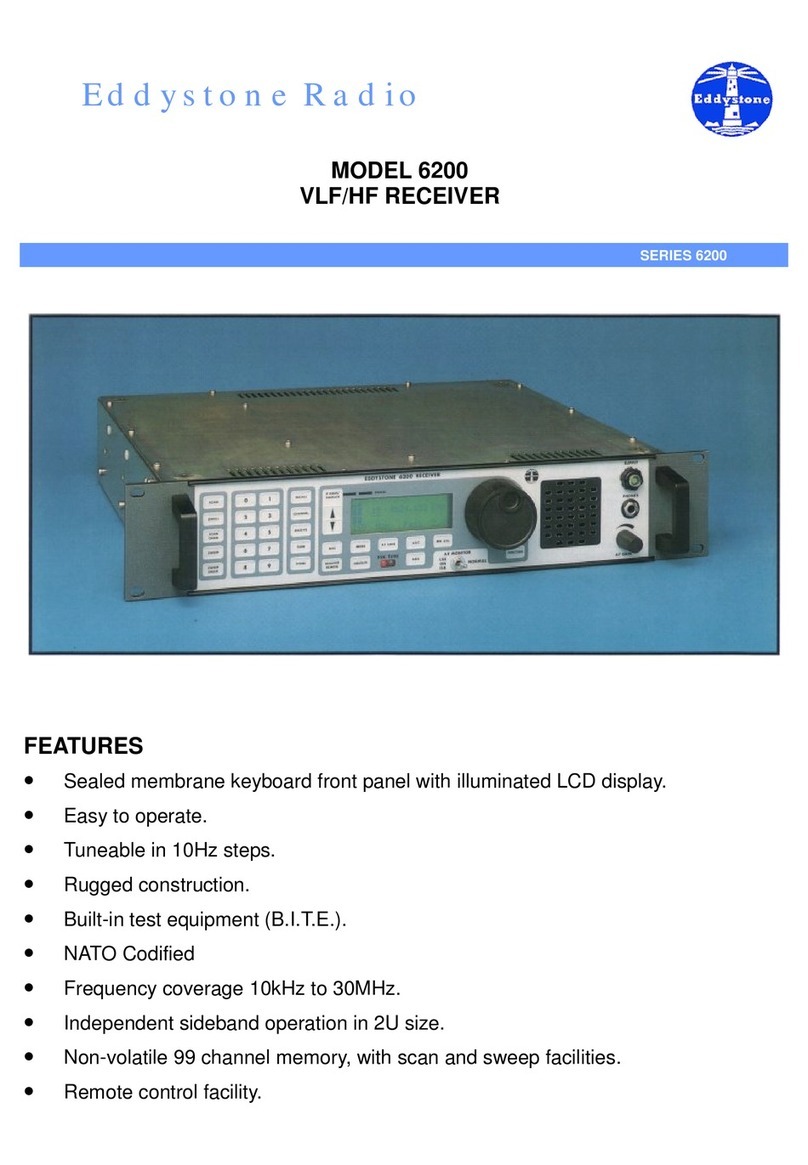
Eddystone
Eddystone 6200 Owner's manual

Eddystone
Eddystone 770R User manual
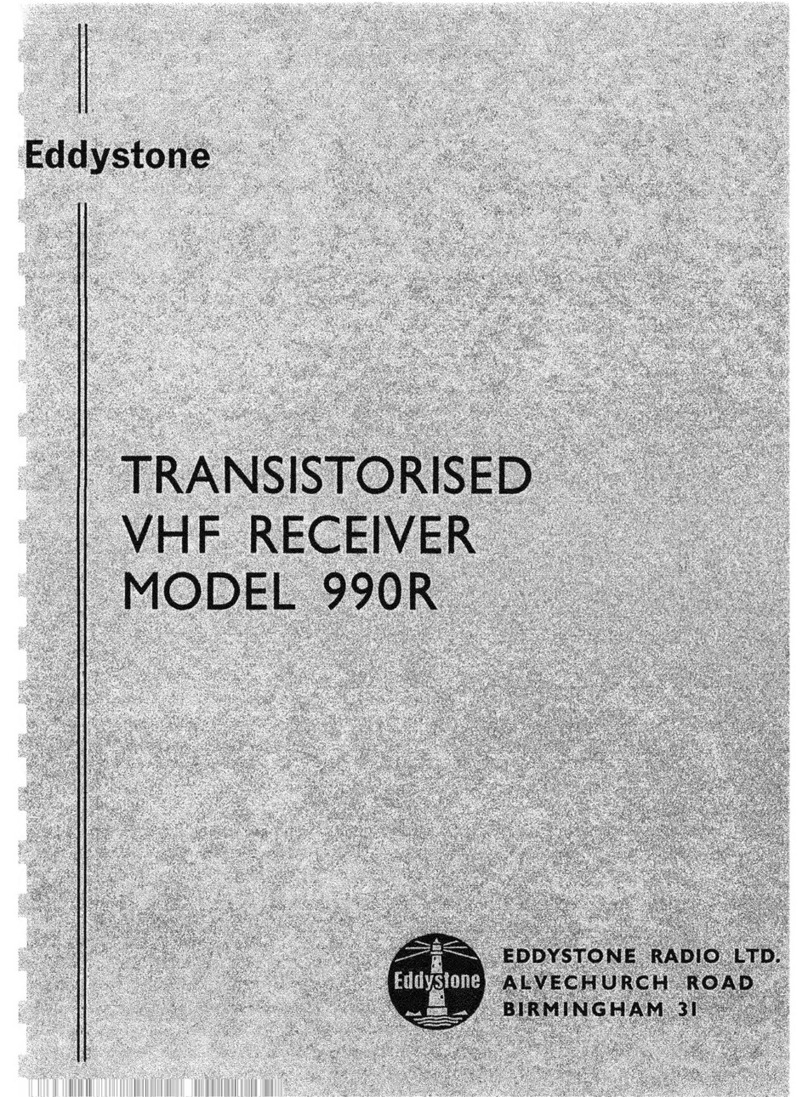
Eddystone
Eddystone 990R User manual

Eddystone
Eddystone 6200 User manual

Eddystone
Eddystone 1990R/2-S User manual

Eddystone
Eddystone 990R User manual

Eddystone
Eddystone 659 User manual
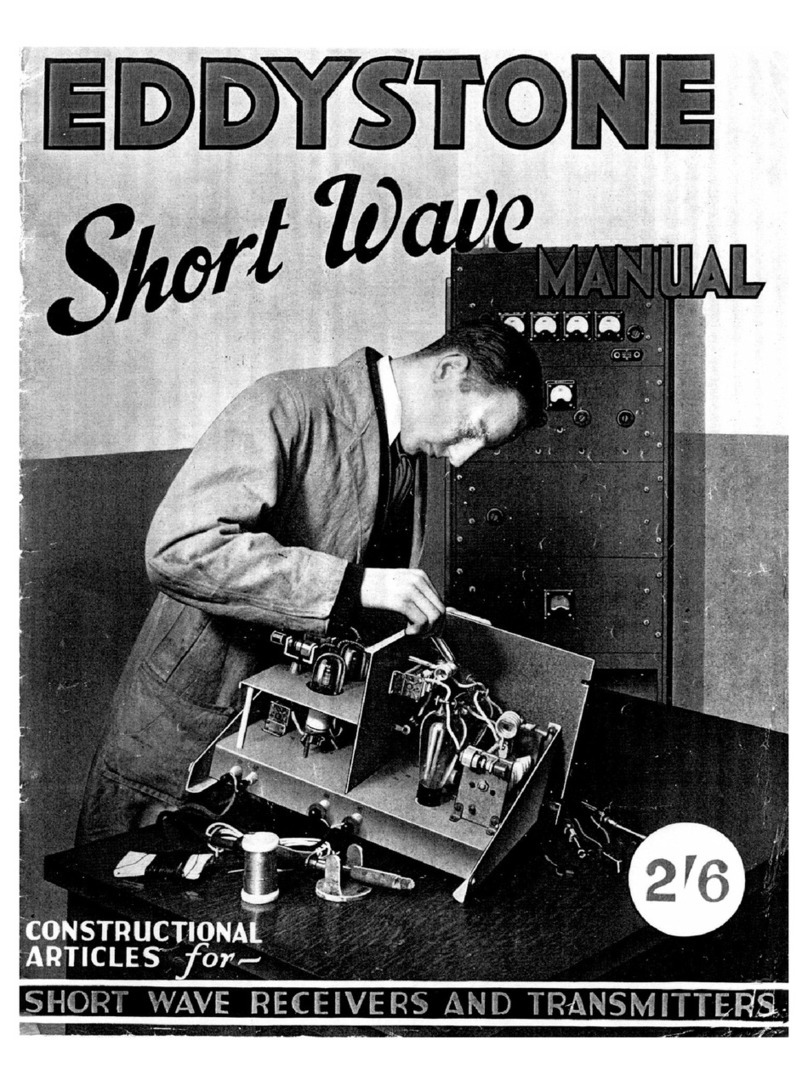
Eddystone
Eddystone Short Wave User manual

Eddystone
Eddystone 880 User manual
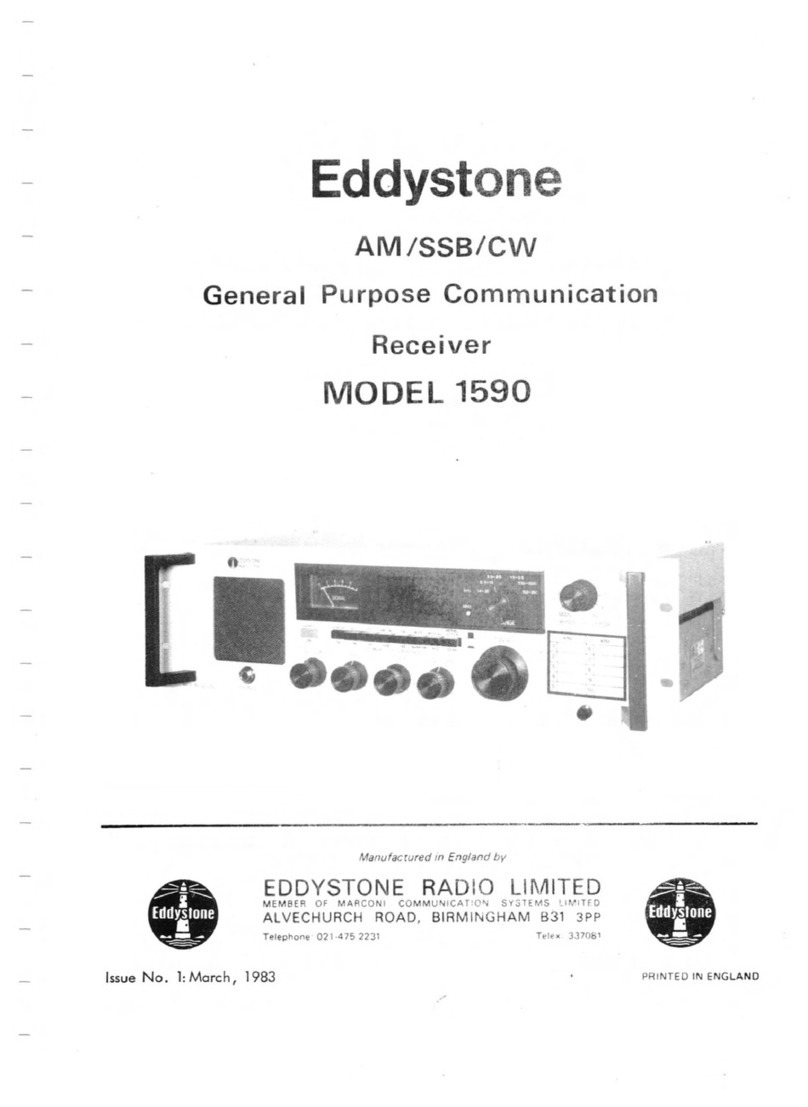
Eddystone
Eddystone 1590 User manual
